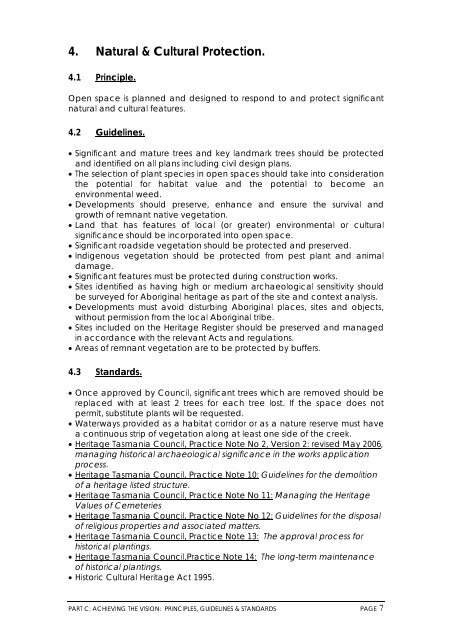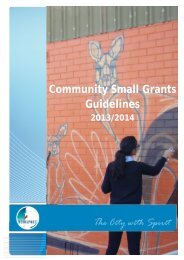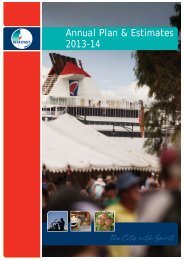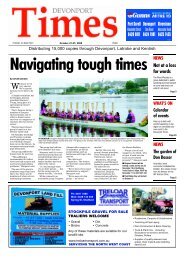Public Open Space Guidelines 2.17 Mb - Devonport City Council
Public Open Space Guidelines 2.17 Mb - Devonport City Council
Public Open Space Guidelines 2.17 Mb - Devonport City Council
You also want an ePaper? Increase the reach of your titles
YUMPU automatically turns print PDFs into web optimized ePapers that Google loves.
4. Natural & Cultural Protection.4.1 Principle.<strong>Open</strong> space is planned and designed to respond to and protect significantnatural and cultural features.4.2 <strong>Guidelines</strong>.• Significant and mature trees and key landmark trees should be protectedand identified on all plans including civil design plans.• The selection of plant species in open spaces should take into considerationthe potential for habitat value and the potential to become anenvironmental weed.• Developments should preserve, enhance and ensure the survival andgrowth of remnant native vegetation.• Land that has features of local (or greater) environmental or culturalsignificance should be incorporated into open space.• Significant roadside vegetation should be protected and preserved.• Indigenous vegetation should be protected from pest plant and animaldamage.• Significant features must be protected during construction works.• Sites identified as having high or medium archaeological sensitivity shouldbe surveyed for Aboriginal heritage as part of the site and context analysis.• Developments must avoid disturbing Aboriginal places, sites and objects,without permission from the local Aboriginal tribe.• Sites included on the Heritage Register should be preserved and managedin accordance with the relevant Acts and regulations.• Areas of remnant vegetation are to be protected by buffers.4.3 Standards.• Once approved by <strong>Council</strong>, significant trees which are removed should bereplaced with at least 2 trees for each tree lost. If the space does notpermit, substitute plants will be requested.• Waterways provided as a habitat corridor or as a nature reserve must havea continuous strip of vegetation along at least one side of the creek.• Heritage Tasmania <strong>Council</strong>, Practice Note No 2, Version 2: revised May 2006,managing historical archaeological significance in the works applicationprocess.• Heritage Tasmania <strong>Council</strong>, Practice Note 10: <strong>Guidelines</strong> for the demolitionof a heritage listed structure.• Heritage Tasmania <strong>Council</strong>, Practice Note No 11: Managing the HeritageValues of Cemeteries• Heritage Tasmania <strong>Council</strong>, Practice Note No 12: <strong>Guidelines</strong> for the disposalof religious properties and associated matters.• Heritage Tasmania <strong>Council</strong>, Practice Note 13: The approval process forhistorical plantings.• Heritage Tasmania <strong>Council</strong>,Practice Note 14: The long-term maintenanceof historical plantings.• Historic Cultural Heritage Act 1995.PART C: ACHIEVING THE VISION: PRINCIPLES, GUIDELINES & STANDARDS PAGE 7
















